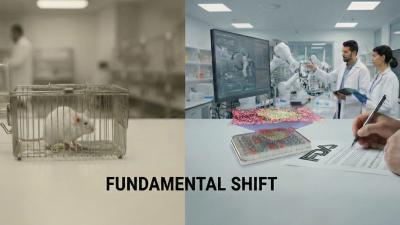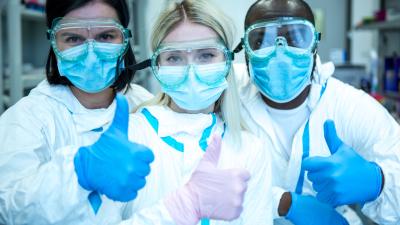Book Review: Lab Dog by Melanie D.G. Kaplan

Melanie D.G. Kaplan’s Lab Dog: A Beagle and His Human Investigate the Surprising World of Animal Research is that rare book that changes how you see a familiar issue—by inviting you to walk alongside a single dog.
Part memoir, part reporting, and wholly humane, Lab Dog follows Kaplan and her beagle, Alexander Hamilton (“Hammy”), from a tentative first night in a home to a life built on trust, using that intimate journey to illuminate the hidden machinery of animal experimentation. Hammy was born at a beagle breeding facility in Cumberland, Va., that supplied dogs to laboratories across the country. The facility was permanently shut down in 2022 following a federal investigation that uncovered extensive Animal Welfare Act violations, leading to the rescue of nearly 4,000 dogs.
What makes this book so effective is Kaplan’s balance of heart and rigor. She writes with a journalist’s curiosity and a dog guardian’s tenderness, weaving Hammy’s story through an investigation of an industry that breeds, uses, and discards tens of thousands of dogs each year. She traces the history from Pepper the Dalmatian and the Animal Welfare Act to the modern “dog farms” that mass-produce beagles, listening closely to scientists, ethicists, policymakers, and advocates. The result is accessible without oversimplifying, poignant without sensationalizing, and unfailingly grounded in fact.
Kaplan does not rely on outrage; she lets the facts and Hammy’s experience speak for themselves. Readers learn how dogs, mostly beagles, are still used each year in experiments ranging from drug testing to toxicology studies, despite the availability of modern, human-based methods. Yet rather than presenting this as a simple battle between good and evil, Kaplan gives space to multiple perspectives, including researchers, veterinarians, ethicists, and advocates. The result is a nuanced exploration of why these practices persist and how they might finally change.
For readers steeped in research policy, Kaplan’s contribution is vital: She bridges the gap between technical debates about “alternatives” and the lived experience of the animals affected. Her narrative is both heartwarming and unsettling. Hammy’s cautious trust, his health journey, and his growing joy are tender reminders of resilience; her accounts of breeding facilities and laboratory conditions are difficult but necessary to confront. She brings journalistic clarity to the subject without losing sight of its emotional truth—that every number in a laboratory inventory is a living being capable of pain, fear, and love.
Beyond exposing the realities of animal experiments, Lab Dog offers hope. Kaplan highlights the scientists developing nonanimal approaches, adoption programs for dogs used in experiments, and laws promoting transparency and accountability. Her message is not one of despair but of possibility: that progress in science and progress in ethics can, and must, move together.
At its heart, Lab Dog is a love story that widens into a call to conscience. It invites readers to look more closely at the systems society funds and accepts, and to imagine a future where compassion guides both our science and our humanity. Deeply moving and beautifully written, it’s a book that will stay with you long after you close it, one that inspires us to build better science and a kinder world.







